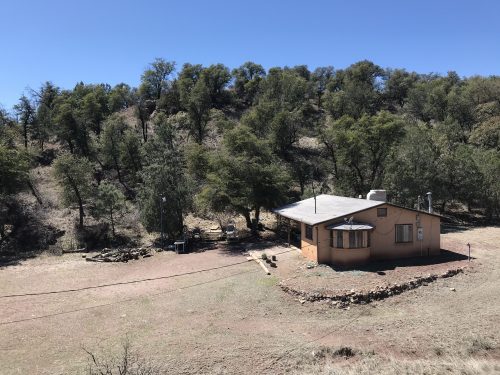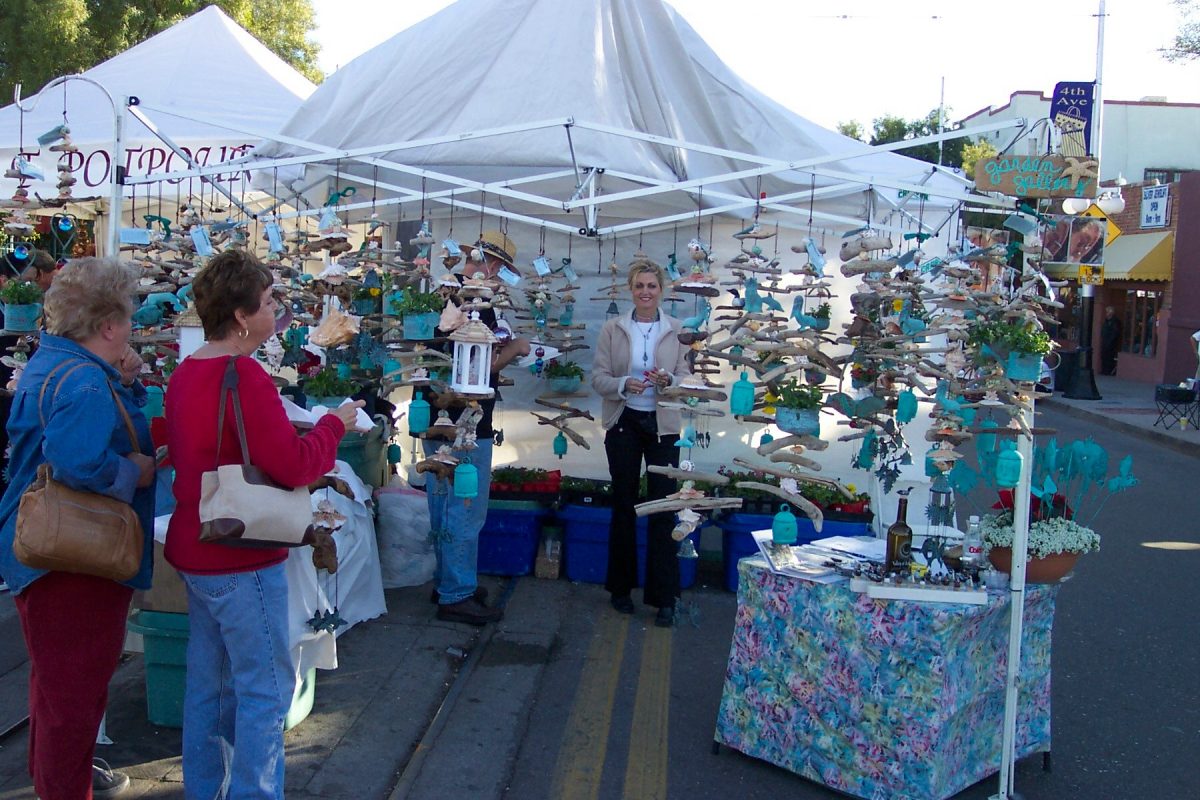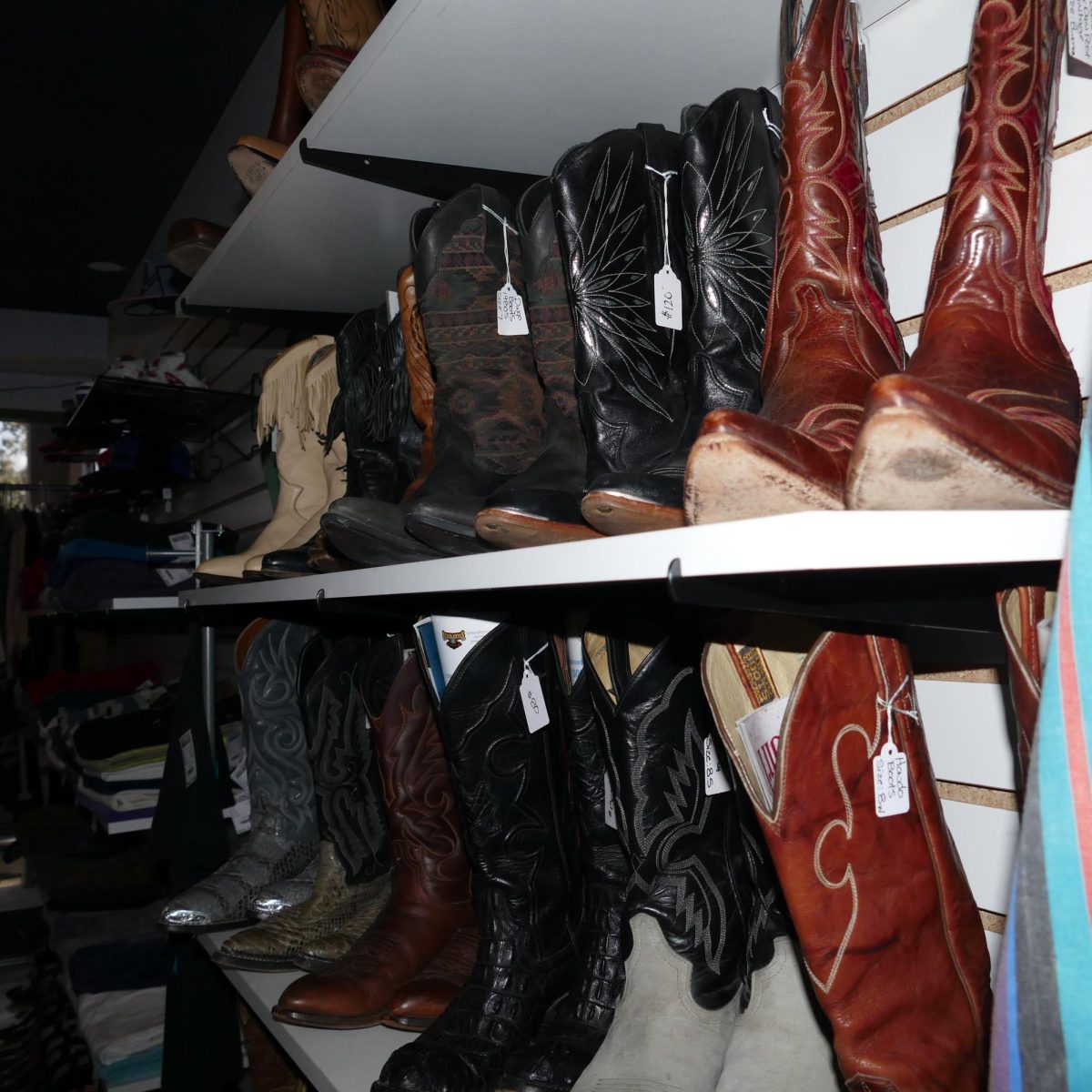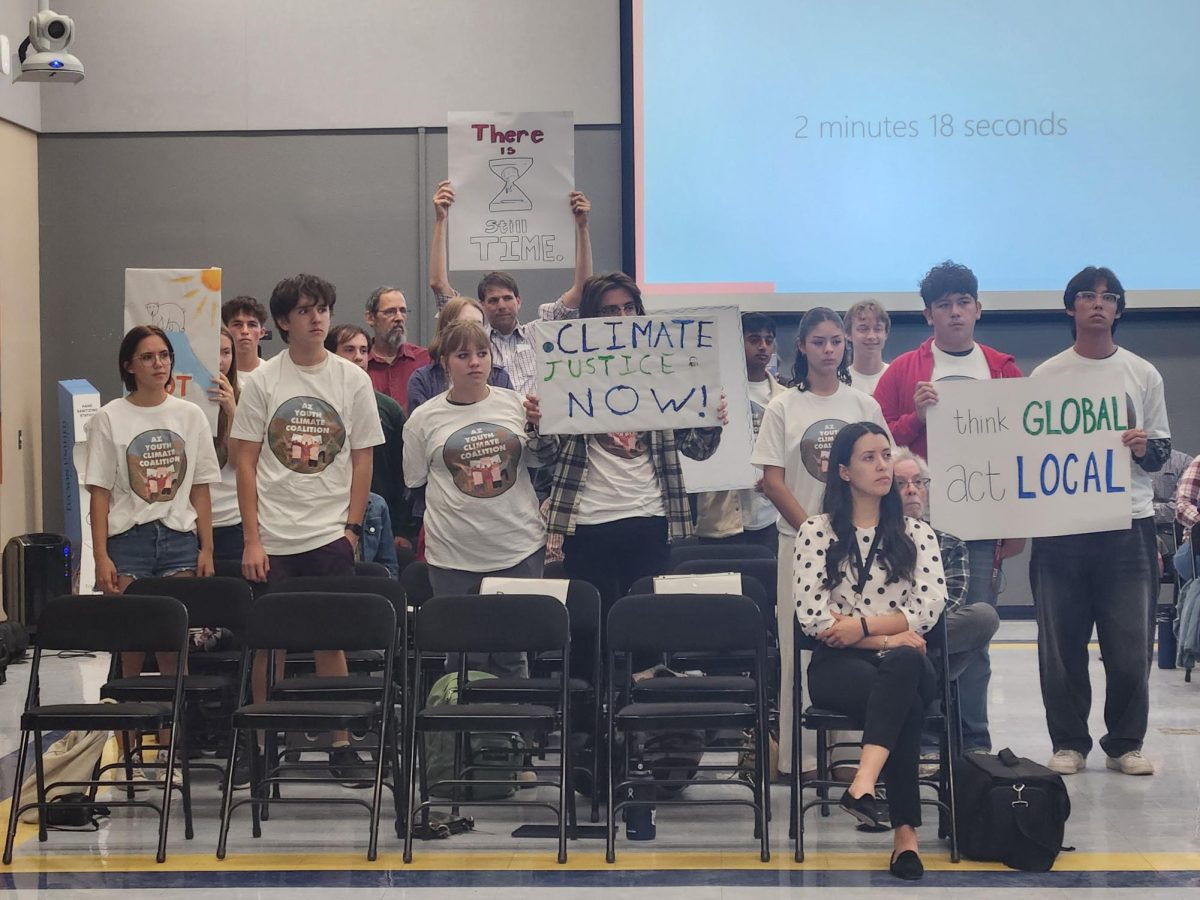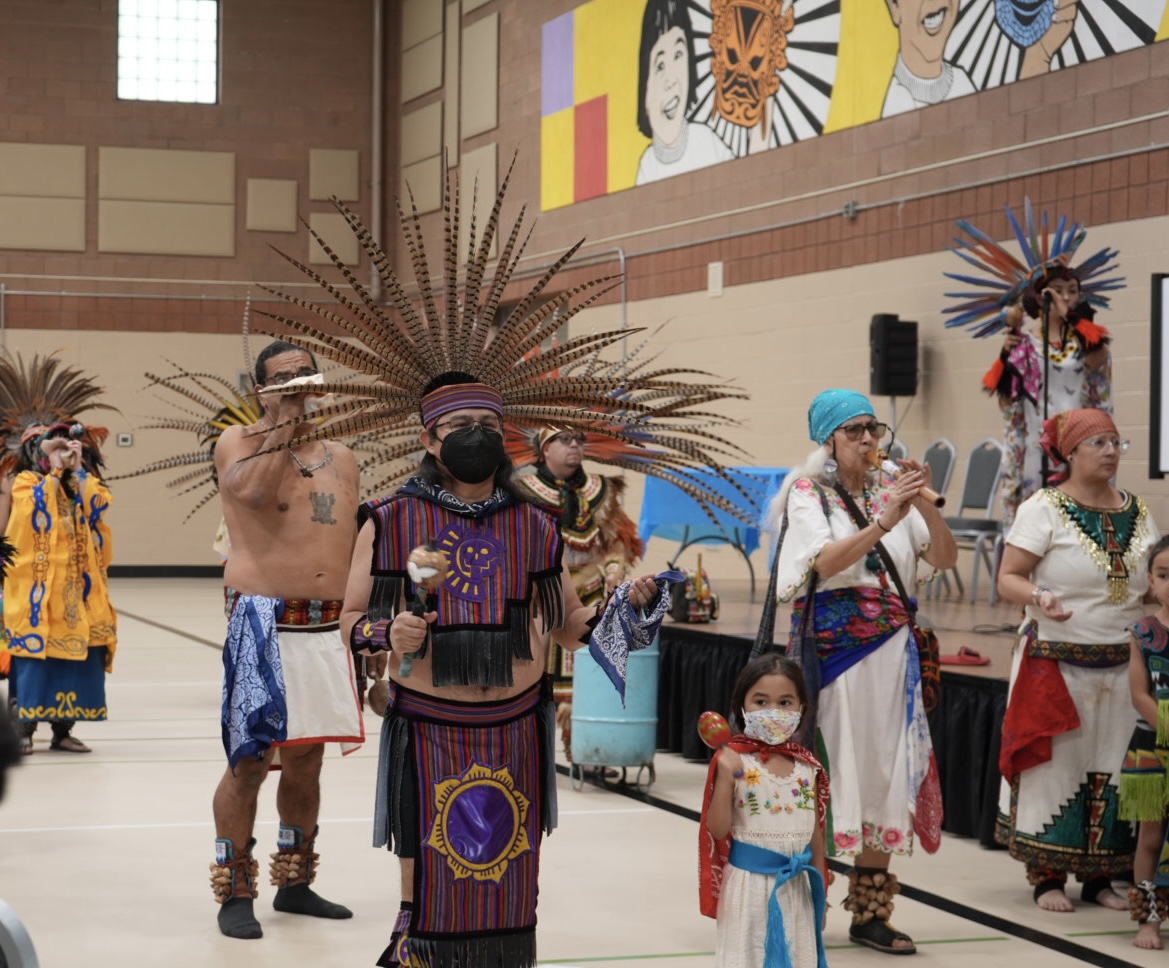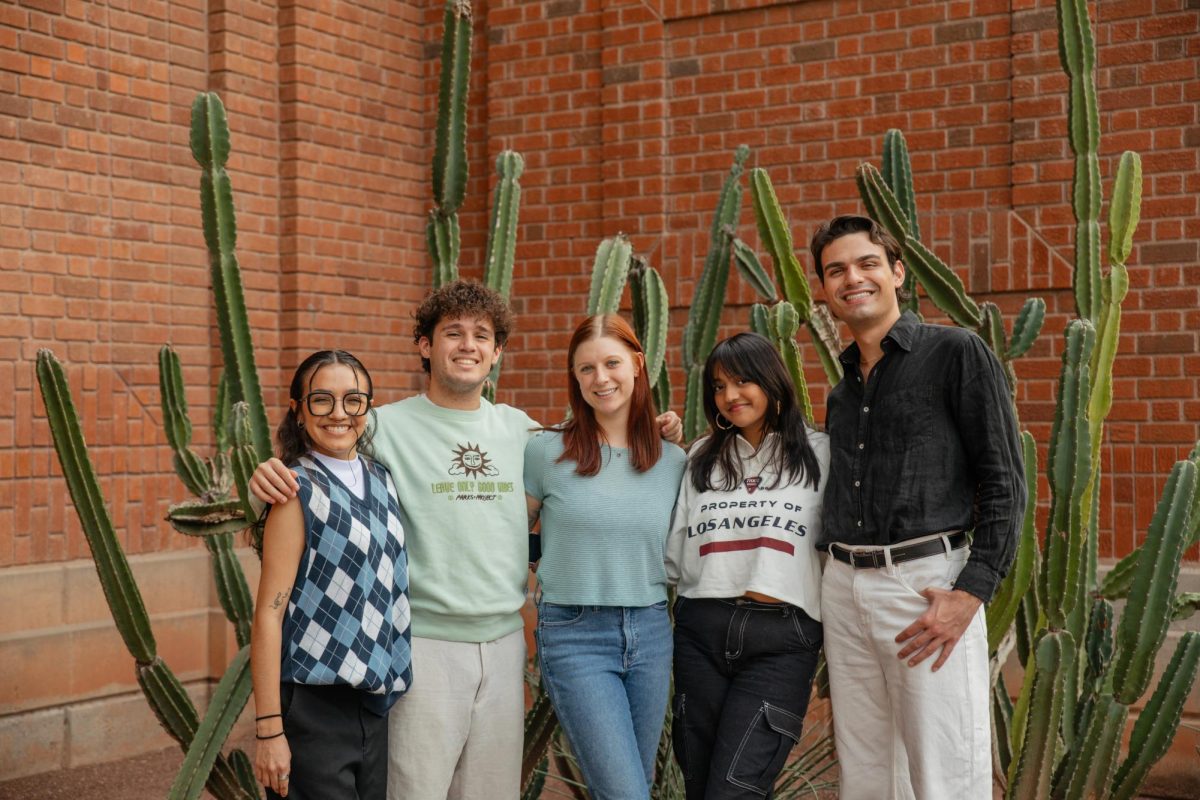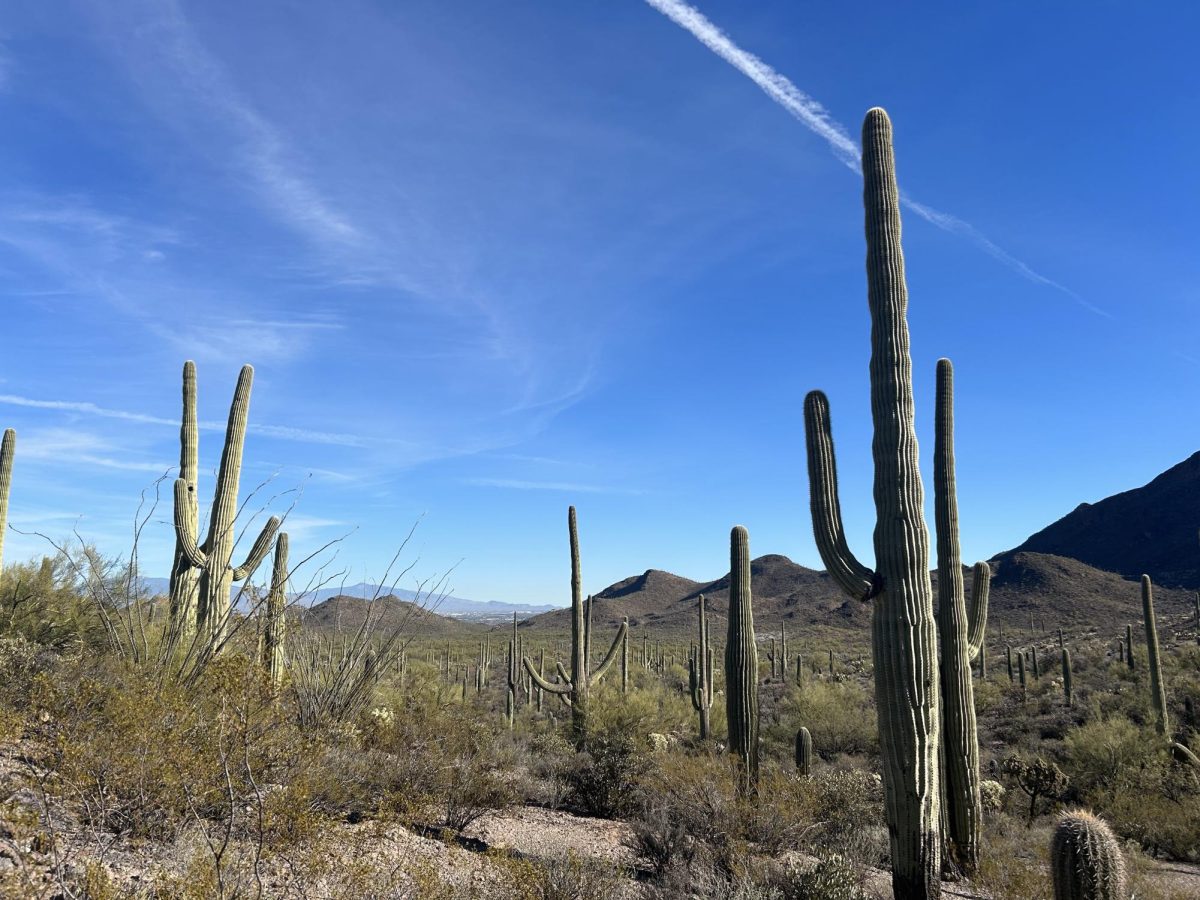By Clara Migoya/El Inde
Antonio Tapia, 79, stands on the porch of his southside Tucson home, scanning a sepia drawing through thick, smoky glasses. His eyes move from a tall poplar tree in the picture, to the small adobe building, the tin-shed house, a horse pasturing, the dirt street at the border of the wire fencing. At the top of the frame there is a rusty metal label that reads “Tapia Household.”
The piece of art, drawn by a family friend and given to Tapia by one of his granddaughters, depicts the Tapia home as it looked before it and the other buildings in the mining town of Harshaw were demolished by the U.S. Forest Service in the 1980s.
Inside the house, Tapia’s daughters, grandson, and son-in-law are sitting by the kitchen counter or in the adjacent living room, listening, as Tapia and his wife, Alicia, reminisce about their early lives in the mining camp just south of Patagonia.
Conversations turn lively when they talk about the ballroom nights in Lucky’s Saloon and the wild food and plant harvest. Merlinda Tapia, the oldest of Tony and Alicia Tapia’s children, leaves her post behind the kitchen counter and comes back with a plastic bag full of acorns they picked last summer around the Harshaw grounds.
Tony Tapia grew up during the 1940s and 1950s, when the Trench and Flux mines were under the operation of the American Smelting and Refining Company (ASARCO). His father worked there, as did the other 20 or so families who lived in the area.
The mining legacy traces centuries back. During its prime, Harshaw was a bustling town of 2,000 inhabitants and one of the richest mining locations in the West. In 1880, the Harshaw mining district, consisting of about 40 mines plus prospect sites, produced around $1.1 million in silver. By 1883, the Hermosa Mine alone, half a mile away from Harshaw, produced $700,000, according to a 1915 U. S. Geological Survey report.
“Harshaw at that time was booming and word got around,” said Frank Soto, a cousin of Tapia’s and the oldest of six brothers and sisters who grew up in Harshaw in the days of ASARCO.
Frank sits with his three brothers, Henry, Mike and Juan, around their family dining table in southside Tucson. Angelita Soto, their sister, follows the conversation through a phone call on the speaker. Conversations go back and forth from English to Spanish as they all laugh and joke, pouring out memories of their childhood and life in Harshaw. The Sotos recall the abundance of mulberries, black walnuts, wild oregano and quelites — fresh edible herbs, like bledo, chuales, verdolagas and wild onion.
“Harshaw was named after the guy who founded the mines, but it already had a name: el Durazno,” said Henry Soto, third of the six siblings. “We still call it el Durazno (peach).” Juan Soto said the name came probably from the fruit orchards that the Spanish planted in the early 18th century.
During the European colonization, the mountains of Arizona and Sonora were coveted for their minerals — a USGS report states that the altar of the San Xavier Mission, in the Tohono O’odham reservation south of Tucson, was once adorned with $40,000 of solid silver from the Santa Rita mountains.
“When we lived there, there were two apple trees, two apricot trees and two pear trees outside our house, and peaches,” said Frank Soto. Mike, jumping in right after, added, “They were about this big,” mimicking the size of a Granny Smith apple. “You would come by the trees and they were ripening, the juice would just come running down your arm.”There wasn’t any tap water nor electricity for most of their childhood. They ran around barefoot. “We were poor, but we had everything,” said Angelita Soto, across the phone line.

The Soto family story is a typical one in Harshaw. Their great-grandfather, Angel Soto, moved across the West from Placer, California, chasing the chance of wealth and an opportunity in the mining industry which also extracted rich silver, copper and zinc ores in Arizona. In the 19th century, he arrived with his wife to the Patagonia Mountains in hopes of earning a living and sustenance for his seven kids. Despite the mine’s prosperity, wages at that time were around $2 a day for a Mexican worker. Non-Mexicans would usually make double that wage.
Several generations of Sotos worked the mines, including Frank’s father, Miguel “Skippy” Soto. He was called Skippy because of his energetic work style, Juan Soto said. From a young age, Skippy pushed mineral-bearing ore wagons right behind the mules, out of the shaft.
Although they never went inside the shafts, Henry, Mike and Juan Soto also worked in the Trench Mine, when it was still operated by ASARCO.
In 1964, the company shut down operations and a man by the name of E.W. McFarland tried to squeeze out whatever was left in the rock, although with very poor results, Tony Tapia said. For a brief time after high school, Tapiawas employed by McFarland to run the mill. He also took shifts as school janitor and highway worker, and unloaded hay from trucks. In those days, there wasn’t much work left in Harshaw. When the railroad in Patagonia closed down, so did the mine. Most of the people soon followed.
“The mining went away, so people had to move out and go find a job,” said Frank Soto. “Most of them went to Silver Bell Mine and Mammoth.”
The mining families lingered as long as they could. But eventually, just how jobs had attracted them to settle in Harshaw in the late 19th century, the lack of jobs pushed them out. Not long after, the U.S. Forest Service decided they were taking back the land and everyone was to be evicted. Around the 1980s, they plowed the town down. No one had legal claims to stop it.
“They weren’t landlords or anything, they were all settlers there, including us,” said Tony Tapia. “So, they leveled down the place.”
Today, there is barely a trace of the settlements. Centuries-old sycamore trees line the dry riverbed of Harshaw Creek. On both sides of it, where the town used to stand, there is only flat earth. Only four families managed to retain some land; the Hales (the only non-Mexican family of Harshaw), the Villagráns, the Tapias and the Sotos.
Around the 1930s, Frank Soto’s grandfather, Mariano, applied for a homestead, acquiring titles for 60 acres of government land outside of the U.S. Forest Service lands. The Tapias also inherited land through their grandfather, who was married to Mariano’s sister, Teresa.
Many now call it a “ghost town,” but those who grew up in Harshaw never stopped visiting. Sometimes, the Tapias and Sotos go out there on the weekends.
“Easter, it’s always a big time,” said Merlinda Tapia. In April, campers and tents set up along the creek and under a big sycamore tree by the small Harshaw cemetery where tombstones and crosses mark the graves of members of the Medina, Cota, Robles, Valenzuela, Tapia, Encinas and Acevedo families. Theyline the hill, decorated withreligious figures, colorful plastic flowers and some fresh bouquets.

The wealth inside the Harshaw mountains continues to attract investors. Less than half-a-mile from the old town grounds, a new mine is prospecting to take, with better means and technology, what others couldn’t.
In 2015, Arizona Mining Inc. began exploratory drilling on the Hermosa mining site, a 450-acre property of private land. In 2018, Australian-owned South32 acquired Arizona Mining Inc. for $1.3 billion, gaining ownership of the project. The company estimates that the mineral deposits, Taylor and Clark, contain 5.3 million tons of zinc, 5.7 million tons of lead and 344 million ounces of silver.
South32 says that their polymetallic mining operation would take place completely underground, starting at around 2,500 feet beneath the surface and eventually tunnelingto 4,000 feet. The Hermosa-Taylor site, as it has been renamed, has the potential to become one of the largest zinc-producing mines in the world.
“We are a mining family, so to me a mine is just another mine.But it is tooclose to home,” said Juan Soto. “It’s kind of a ‘not in my backyard’ thing.”
Mike Soto goes almost every week to do garden work and care for the Soto homestead, which sits on a 15-acre plot and receives a few seasonal hunting guests and family and friends for the holidays. The Sotos decided they wouldn’t split their inheritance so the land could stay undivided, inside the family.
Juan Soto, the “historian of the family,” as his brothers call him, has a hypothesis for why his grandfather applied to the homestead program: the memory of dispossession. The Sotos have been in the West since the 1770s, even before it became U.S. land, but lost all their land when the Guadalupe-Hidalgo Treaty made Mexicans living in California foreign.
The memory is still fresh in a way. “My mother said, ‘No matter what happens, you guys stay with the land. Don’t sell it, let it stay in the family’,” Tony Tapia remembers.
“I would go back to live there anytime,” said Tapia, dreamily, remembering the nature and surrounding mountains. He paused and, referring to the South32 operations, added: “But now there is too much noise from all the trucks going up and down.”
Editor’s note: A version of this story will appear in the summer 2020 special issue of the Patagonia Regional Times.


